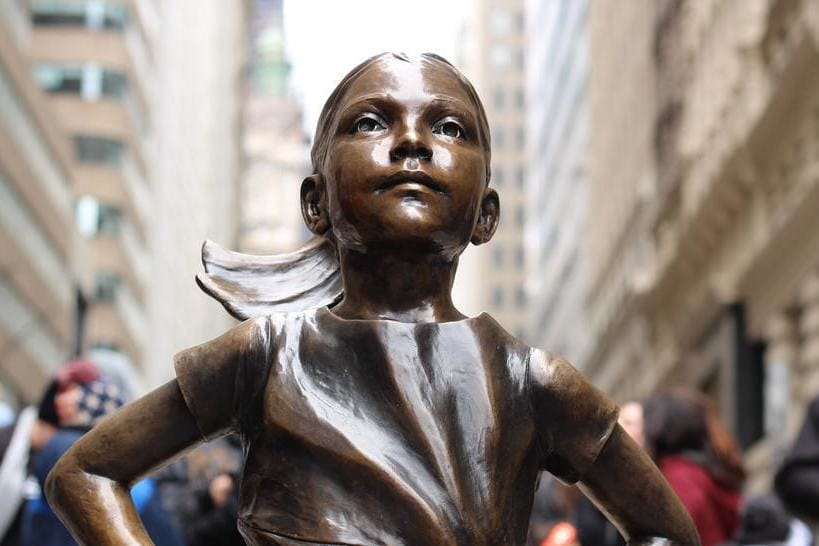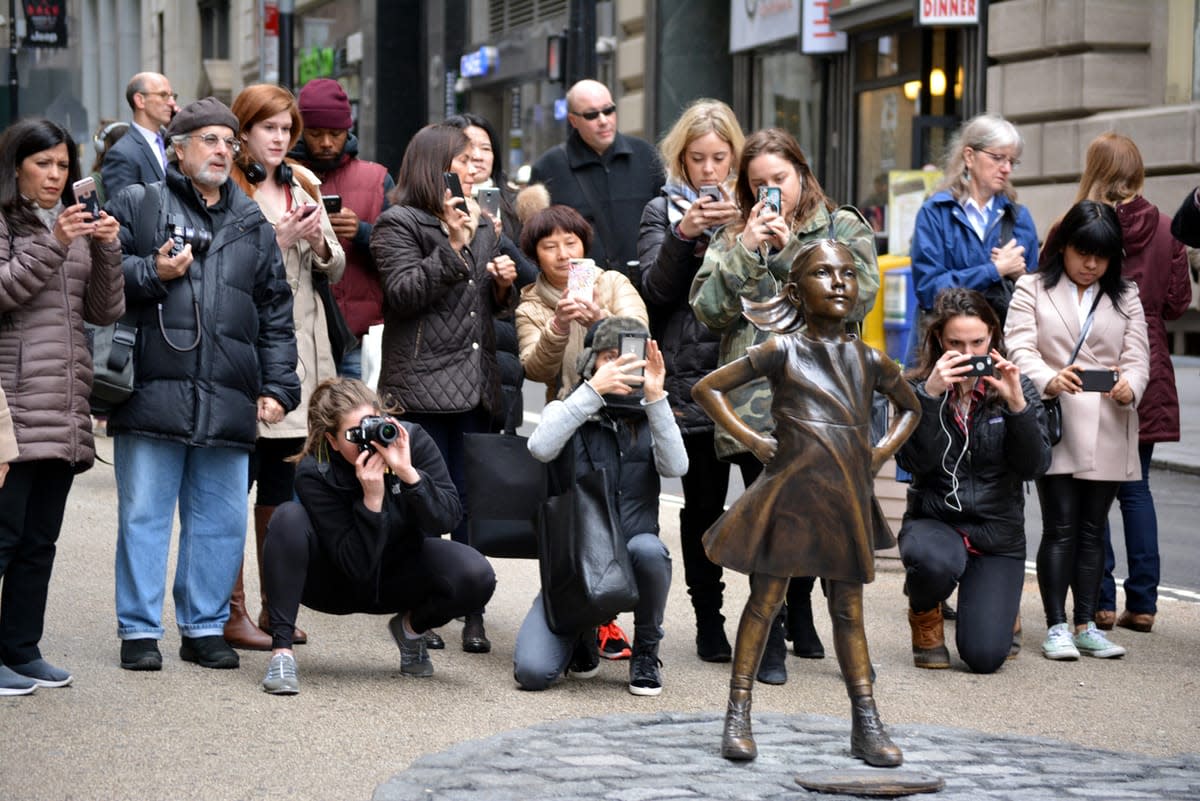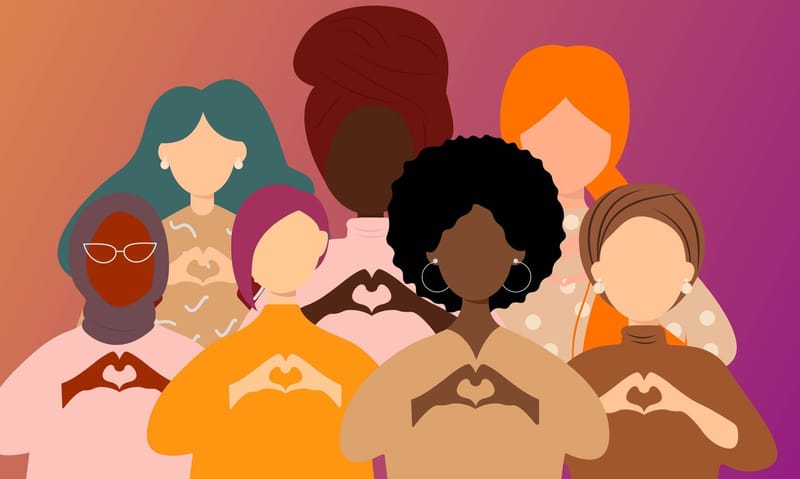
A small girl stands with her hands on her hips, her feet firmly grounded, her face struck with an expression of calm resolution. She opposes a huge snarling bull, a mad giant of a beast poised ready to strike. Fearless Girl faces Charging Bull. In a tense counter-balance of wits and presence, neither back down. Both are bold, brave and forceful in their own right.
Launched in New York City for International Women’s Day of 2017, the 1.27-metre bronze statue of a little girl was placed opposite the iconic bull statue symbolising Wall Street’s financial might.
A publicity stunt-turned-global feminist rallying point, Fearless Girl was commissioned by State Street Global Advisors, managers of an index fund comprised of companies with a relatively high percentage of women in senior leadership roles. The campaign aimed to promote workplace gender diversity, and encourage companies to recruit more women onto their boards.
Within hours, Fearless Girl had flashed through the Twittersphere more than billion times, stoking fire in the bellies of women worldwide.
Crowds gathered to admire the tiny new phenomenon. Mothers shared photos of their daughters standing shoulder to shoulder with their new superhero, testing the power pose out for themselves.
Although it was to stay in place only temporarily, the public demanded the statue stay forever. A year later, Fearless Girl was moved to a permanent home outside the New York Stock Exchange.
Melbourne's own Girl
A replica of Fearless Girl was recently unveiled in Melbourne for this year’s International Women’s Day, becoming the third city globally to host a replica of the original, bringing her message of empowerment and equality close to home.
Although first aimed at the corporate finance sector, Fearless Girl resonates widely across other male-dominated industries fighting to increase the participation of women and achieve long-awaited, much-needed gender equity.
The engineering profession in Australia is a prime example.
According to the latest figures from Engineers Australia, just 13.6 per cent of the engineering labour force are women, and half of the women who qualify as engineers never work in the profession.
Further figures show that women’s participation in undergraduate engineering courses stayed at 15.3 per cent on average between 2001-2017.
Year 12, girls’ participation in advanced maths and physics – the fundamental tools needed for all engineering practice – drops to half the rates of boys. Despite relying on skilled migration programs to address the current workforce shortage of professional engineers, we’re still keeping girls out of future careers in engineering, and losing women once they’re in.
The figures simply won’t change unless we take fearless action on behalf of our girls.
“We need a diversity of ideas and experiences to develop the best solutions, and it’s our responsibility to ensure girls know this and are invited to participate."
Monash’s Dean of Engineering, Professor Elizabeth Croft, has a goal to achieve 50:50 gender balance in the University’s engineering enrolments by 2025. She’s a strong advocate for the profession taking responsibility for fixing a problem entirely of its own making.
“We don’t need to fix girls and their perceived lack of interest in engineering careers,” she said. “It’s our fault as a profession, not theirs. We simply haven’t made engineering a compelling choice for girls to make.”

Instead, Professor Croft believes that girls must be invited and encouraged to see engineering as a valid and relevant career option, where technical solutions to the world’s most challenging problems can be imagined and designed.
“Engineering lives at the intersection of creative design and scientific nous,” she said. “We need a diversity of ideas and experiences to develop the best solutions, and it’s our responsibility to ensure girls know this and are invited to participate.
“Girls are natural engineers, highly capable in maths and physics. We need to show them that these tools can be used to design a better world.
“If we want to engineer a world that serves everyone’s needs, we need to make sure women and girls are active participants in the process of designing clean energy systems, sustainable transportation, trusted network systems, healthy living spaces and better food products.
“So far, we’ve done a poor job of communicating to girls the very powerful impact they can make through an engineering career.”

Support needed
Fearless girls keen to change the world through engineering still need support from their parents and teachers, and Professor Croft doesn’t let them off the hook, either.
“Parents and teachers have a critical role to play,” she said. “As a profession, it’s our responsibility to ensure that teachers and parents can communicate the important social value of engineering, nationally and internationally, and continue that effort and commitment, from kindergarten all the way to Year 12.”
The national imperative to do so is clear.
“Without a strong and diverse engineering workforce, we won’t stay competitive internationally into the future.”
On International Women’s Day, Fearless Girl should inspire us all to commit to raising girls as fearless engineers, ready to design and build a better world for everyone.
Find out more about this topic and study opportunities at the Graduate Study Expo





